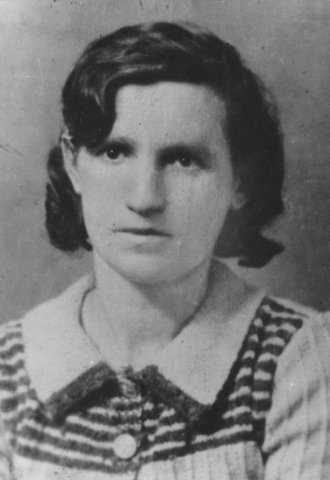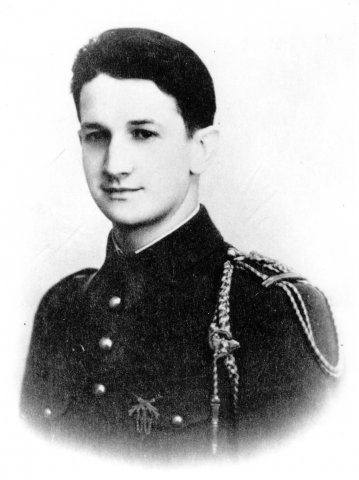As working and living conditions continued to deteriorate, discontent of the miners increased.
In the first months of the occupation, there were sporadic but repeated strikes and work stoppages, leading to a significant decline in yields.
In response, the [Axis] increased the length of the working day by half an hour from 1 January 1941, with no increase in wages. The decision enraged the miners, and communists and underground union activists took the opportunity to agitate amongst the workers — unions had been banned by the Vichy government.
The next day, the miners began a series of go‐slows, carrying out work stoppages half an hour at the beginning or end of service.
Beginning at Pit 7 Escarpelle, near Douai, the movement spread to all the pits in Aniche and Escarpelle over the next two weeks.
Despite injunctions and measures taken by the [Axis] authorities, the movement continued until the arrest of nearly two hundred miners. Faced with a renewed strike in Escarpelle in March, the [Axis] sent in troops to occupy the pits.
On 1 May, International Workers Day, French tricolours and red flags appeared, and radical leaflets were circulated.
The following week the discontent spread to Belgium, where 100,000 steelworkers and miners walked out. Conditions were ripe for the underground organisers.
Towards a general strike
Finally, on 27 May there was the straw which broke the camel's back.
On top of the longer days, wage freezes and insufficient rations, the mining companies decided to impose payments by team, rather than individual, which would have meant lower wages for some miners.
Again beginning at Pit 7 in Dourges, the movement spread rapidly.
Workers prepare a list of demands calling for higher wages, better working conditions, improved supplies of butter, red meat, soap and more is presented to the employers.
Leaflet produced by striking minersBy 29 May, the strike had spread to Courrières and Ostricourt, then to Carvin and Escarpelle the following day and Anzin the day after that.
In five days, the strike became general in the Nord and Pas‐de‐Calais regions and peaked 4–6 June, with over 100,000 striking from a workforce of 143,000.
Related industries including coking plants and power stations were affected, which then had a knock‐on effect on the textile industry.
The movement was widely supported by women, who helped spread the strike. Everywhere they formed pickets, barring the entry of tanks and urging miners to strike.
They demonstrated outside oil company offices in Lievin, in Hénin‐Liétard and Billy‐Montigny to name but a few. And in some cases could only be disbursed by [Axis] troops using live ammunition.
Émilienne Mopty (pictured) was one such woman. The wife of a miner, during the strike she became the key organiser of the women's demonstrations in Hénin‐Liétard on May 29 and Billy‐Montigny 4 June.Forced into hiding, she was later arrested by the Gestapo and beheaded in Cologne on January 18, 1943.
Repression
Faced with this dire situation, the occupation authorities began to ramp up the repression.
The first arrests were made on 28 May from lists provided by the mining companies from reports made by engineers and mine guards.
However this was insufficient to halt the spread of the strike, so army reinforcements were brought in.
On June 3, General Niehoff ordered the putting up posters containing two notices: the first requiring miners to return to work, the second announcing the sentencing of eleven strikers to five years of forced labour and two women and two to three years of hard labour.
Still, the strike continued, so [Axis] troops occupied the pits. Public places, cafés and cinemas were all closed and gatherings of people banned. Payment of wages was suspended and ration cards were no longer distributed. Arrests multiplied.
Men and women were taken to the prisons of Loos, Bethune, Douai and Arras. The Kleber barracks in Lille and Valenciennes Vincent barracks were transformed into internment camps.
The toll was heavy: hundreds of people were arrested. 270 minus were deported in July in Germany; 130 died. Others were shot later in the year. Many of those who avoid arrest chose to go underground.
Michel Brulé (pictured), for example, was a miner at pit 7 Dourges, where he played a key role in initiating the strike, and he also committed numerous acts of sabotage. He was arrested and shot April 14, 1942 in Marquette‐Lez‐Lille.End of the strike
The wave of terror and hunger took its toll on the miners, and they were forced to return to work on 10 June, having cost the [Axis] war machine 500,000 tonnes of coal in lost production.
However the authorities were forced to grant concessions: [Axis] authorities introduced a special service to bring additional food and workloads to the miners, and the Vichy government granted a general increase in wages on 17 June.
Click here for other events that happened today (May 27).
1932: Tōkyō promoted Prince Hiroyasu of Fushimi to the rank of fleet admiral as Kenzo Nakagawa became Taiwan’s governor‐general.
1940: Fascist tanks and aircraft maintained pressure on the Allies in France, pushing them back four miles toward the coast and placing Dunkirk within artillery range; meanwhile, troops of the 3rd SS Panzer Totenkopf Division, commanded by Hauptsturmführer Fritz Knöchlein, massacred ninety‐seven British prisoners of war by machine gun fire at the village of Le Paradis in France. Berlin awarded Erwin Rommel the Knight Cross medal as the Luftwaffe assaulted Bodø, Norway, rendering 3,500 of the town's 6,000 residents homeless. Imperial bombers attacked Chongqing, China in three waves and Werner Mölders claimed his 19th and 20th victories southwest of Amiens, France.
1941: Axis submarine U‐107 sank British ship Colonial off Guinea, West Africa at 0146 hours, but failed to kill anybody. The Axis captured Canea, Crete, Greece, thus securing the use of the anchorage at Suda Bay. After receiving about 400 gunfire hits from the British ships and several torpedo hits, Bismarck’s crew set off scuttling charges in the boiler room to scuttle her. She sank at 1039 hours; 2,091, most of her crew, died.
1942: Axis official Reinhard Heydrich departed his home in Panenské Brežany for his office at the Prague Castle in Prague, Czechoslovakia in the morning without his usual escort. British‐trained Czech soldier Jozef Gabcík and others attacked his car at Liben, seriously wounding Heydrich with a grenade. More disturbingly, the Axis executed the 152 members of a student group that openly displayed antifascist posters in Berlin, and the Axis executed 168 prisoners, all Polish artists and actors arrested in the previous month, at the wall in the courtyard of Block 11 in Auschwitz I in retaliation for the death of the Luftwaffe commanding officer in Krakow, whence the victims came. The Axis captured Lozovenka near Kharkov, Ukraine, and the Luftwaffe commenced Operation Froschlaich, which mined waters in the vicinity of Kronstadt and Leningrad; the operation would last nearly three weeks. A Ju 87 Stuka aircraft sank an antisubmarine trawler off Portsmouth Harbour, England, slaughtering eighteen but leaving sixteen alive. As well, Axis armor divisions launched the main offensive against the Gazala Line in Libya, which was a mobile tank assault around the southern end of the line. It overran several Allied supply bases, including those guarded by men of the Indian 3rd Motor Brigade, yet the French‐held fort at Bir Hakeim, Libya would prove to be troublesome for the Axis for many days.


